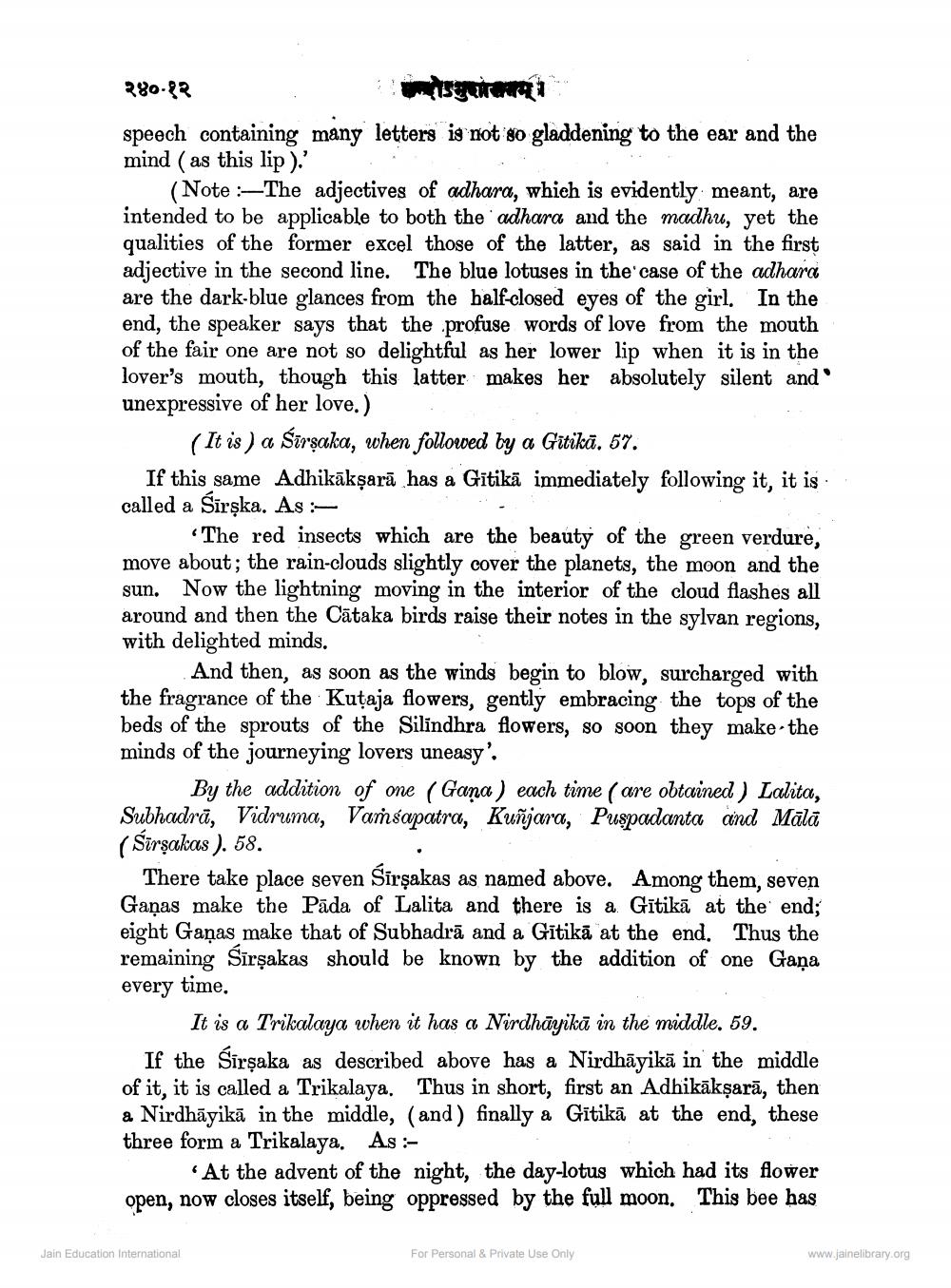________________
२४०-१२
speech containing many letters is not so gladdening to the ear and the mind ( as this lip).'
(Note: The adjectives of adhara, which is evidently meant, are intended to be applicable to both the adhara and the madhu, yet the qualities of the former excel those of the latter, as said in the first adjective in the second line. The blue lotuses in the case of the adhara are the dark-blue glances from the half-closed eyes of the girl. In the end, the speaker says that the profuse words of love from the mouth of the fair one are not so delightful as her lower lip when it is in the lover's mouth, though this latter makes her absolutely silent and unexpressive of her love.)
(It is ) a Šīrşaka, when followed by a Gitikā. 57. If this same Adhikākṣarā has a Gitikā immediately following it, it is called a Sirşka. As -
The red insects which are the beauty of the green verdure, move about; the rain-clouds slightly cover the planets, the moon and the sun. Now the lightning moving in the interior of the cloud flashes all around and then the Cātaka birds raise their notes in the sylvan regions, with delighted minds.
And then, as soon as the winds begin to blow, surcharged with the fragrance of the Kutaja flowers, gently embracing the tops of the beds of the sprouts of the Silindhra flowers, so soon they make the minds of the journeying lovers uneasy'.
By the addition of one ( Gana) each time ( are obtained ) Lalita, Subhadrā, Vidruma, Vaṁsapatra, Kunjara, Puspadanta and Mālā (Sirsakas ). 58.
There take place seven Sirsakas as named above. Among them, seven Gaņas make the Pāda of Lalita and there is a Gītikā at the end; eight Gaņas make that of Subhadrā and a Gītikā at the end. Thus the remaining Sīrşakas should be known by the addition of one Gaņa every time.
It is a Trikalaya when it has a Nirdhāyikā in the middle. 59. If the Sirsaka as described above has a Nirdhāyikā in the middle of it, it is called a Trikalaya. Thus in short, first an Adhikākṣarā, then a Nirdhāyikā in the middle, (and) finally a Gītikā at the end, these three form a Trikalaya. As :
At the advent of the night, the day-lotus which had its flower open, now closes itself, being oppressed by the full moon. This bee has
Jain Education International
For Personal & Private Use Only
www.jainelibrary.org




